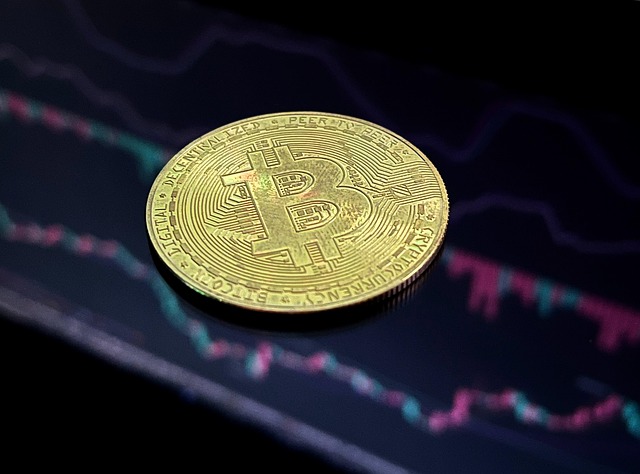Chiliz meets with SEC Crypto Task Force amid US market reentry plans
Chiliz, a SportsFi company, has met with the United States Securities and Exchange Commission (SEC) to discuss an investment and reentry into the US crypto market under the crypto-friendly White House and increased push for regulatory clarity surrounding digital assets.According to the meeting request made public by the SEC, Chiliz plans a reentry into the US market around the time of the 2026 FIFA World Cup international football (soccer) tournament. The comeback would be accompanied by a $50 million to $100 million investment in the local market. National Basketball Association and National Football League teams are said to be interested in launching fan tokens if regulatory clarity improves.The meeting with the federal agency was held on April 22 — the same day Chiliz CEO Alexandre Dreyfus shared a photo with Bo Hines, executive director of Trump’s Council of Advisors for Digital Assets, suggesting a second meeting with White House officials.Source: Alexandre DreyfusAccording to the meeting document, Chiliz discussed the proposed structure of a fan token and why “it should not be classified as a security.” Broadly, a security is an investment wherein the investor expects a profit due to the efforts of someone other than the investor.Whether cryptocurrencies and related assets are securities has been a key issue in the regulation of Web3 within the United States.Related: Chiliz’ Socios.com secures in-principle license approval in MaltaChiliz ecosystem sees lower TVL in 2025Chiliz, despite its partnerships with football clubs, gaming teams, and racing companies, has seen a significant drop in activity within its ecosystem. DefiLlama data shows the protocols’ total value locked has fallen from $17.8 million on Dec. 9, 2024, to $6.5 million on April 22, 2025, marking a 63.5% drop.Chiliz TVL. Source: DefiLlamaIts governance token hasn’t fared particularly well, either. According to CoinMarketCap, the Chiliz (CHZ) token price has declined 67% over the past 12 months. The company is known for its fan tokens, which allow enthusiasts to own the official cryptocurrencies of their favorite sports clubs.The company has made headway into the soccer market, partnering with Football Club Barcelona, Paris Saint-Germain, and Manchester City, among others.Related: FIFA launches NFT collection amid 2023 Club World CupChiliz invested $80 million in partnerships within the US market in 2021, the document shows. However, regulatory uncertainty and the fallout from FTX’s collapse led to a “strategic exit” in the following year.The next World Cup is expected to take place in June 2026. The United States will be the main host of the tournament, while Canada and Mexico will act as auxiliary hosts.Magazine: ‘Normie degens’ go all in on sports fan crypto tokens for the rewardsChiliz, a SportsFi company, has met with the United States Securities and Exchange Commission (SEC) to discuss an investment and reentry into the US crypto market under the crypto-friendly White House and increased push for regulatory clarity surrounding digital assets.According to the proposed meeting request made public by the SEC, Chiliz plans a reentry into the US market around the time of the 2026 FIFA World Cup. The comeback would be accompanied by a $50 million to $100 million investment in the local market. NBA and NFL teams are allegedly interested in launching fan tokens if regulatory clarity improves.The meeting with the federal agency was held on April 22 — the same day Chiliz CEO Alexandre Dreyfus shared a photo with Bo Hines, executive director of Trump’s Council of Advisors for Digital Assets, suggesting a second meeting with White House officials. Source: Alexandre DreyfusAccording to the meeting document, Chiliz discussed the proposed structure of a fan token and why “it should not be classified as a security.” Broadly, a security is an investment wherein the investor expects a profit due to the efforts of someone other than the investor.Whether cryptocurrencies and related assets are securities has been a key issue in the regulation of Web3 within the United States.Related: Chiliz’ Socios.com secures in-principle license approval in MaltaChiliz ecosystem sees lower TVL in 2025Chiliz, despite its partnerships with football clubs, gaming teams, and racing companies, has seen a significant drop in activity within its ecosystem. DefiLlama data shows the protocols’ total value locked has fallen from $17.8 million on Dec. 9, 2024, to $6.5 million on April 22, 2025, marking a 63.5% drop.Chiliz TVL. Source: DefiLlamaIts governance token hasn’t fared particularly well either. According to CoinMarketCap, the Chiliz (CHZ) token price has declined 67% over the past 12 months. The company is known for its fan tokens, which allow enthusiasts to own the official cryptocurrencies of their favorite sports clubs.The company has made headway into the soccer market, partnering with Football Club Barcelona, Paris Saint-Germain, and Manchester City, among others.Related: FIFA launches NFT collection amid 2023 Club World CupChiliz invested $80 million in partnerships within the US market in 2021, the document shows. However, regulatory uncertainty and the fallout from FTX’s collapse led to a “strategic exit” in the following year. The next World Cup is expected to take place in June 2026. The United States will be the main host of the tournament, while Canada and Mexico will act as auxiliary hosts. Magazine: ‘Normie degens’ go all in on sports fan crypto tokens for the rewards
Bitcoin-to-gold ratio risks 35% decline following Wall Street's $13T wipeout
Bitcoin’s (BTC) value relative to gold (XAU) may be poised for a steep 35% drop as it mirrors historical bear market signals and reacts to massive turbulence that has wiped out $13 trillion from the US stock market.Bitcoin’s breaks below key gold supportAs of April 22, the BTC/XAU ratio had closed below its 50-period exponential moving average (50-period EMA; the red wave) on the two-week chart for the first time since April 2022.BTC/XAU two-week performance chart. Source: TradingViewHistorically, a decisive close below the 50-period EMA has led to an extended downtrend toward the 200-period EMA (the blue wave).For instance, in both 2021 and 2022, BTC/XAU experienced an initial bounce after testing the 50-EMA, only to eventually break below it and decline toward the 200-EMA, as shown above.Related: Bitcoin longs cut $106M — Are Bitfinex BTC whales turning bearish above $86K?This pattern is now repeating in 2025 after two recent tests of the 50-EMA support level in 2024 and 2025. BTC/XAU is breaking lower, suggesting that a move toward the 200-EMA may be underway, representing an approximately 35% drop.Mike McGlone, the senior commodity strategist at Bloomberg Intelligence, offers a similar downside outlook for the Bitcoin-to-Gold ratio, citing its extremely positive correlation with the US stock market.Bitcoin/Gold vs. US stock market cap-to-GDP ratio. Source: Mike McGlone“What’s $13 trillion? The 2025 peak-to-trough drop in US stock market capitalization — almost 50% of GDP,” he wrote, adding:“The Bitcoin/gold cross has same-chart symptoms with market cap-to-GDP.“Bounces should be expected in bear markets,” he added, implying that while short-term relief rallies are possible, the prevailing trend for both Bitcoin and equities may remain downward for now.That is in contrast to the ongoing decoupling narrative between Bitcoin and the US stocks.BTC vs gold breakdowns are historically bearishWeakness in the BTC/XAU pair is not just a relative signal; it often foreshadows absolute declines in Bitcoin’s price.This trend was clearly visible during the 2021–2022 cycle. After BTC/XAU broke below its 50-EMA in late 2021, Bitcoin’s price in USD followed suit, entering a prolonged bear market that saw prices fall from over $42,000 to below $17,000.BTC/XAU vs. BTC/USD two-week price performance chart. Source: TradingViewThe pattern also repeated in earlier cycles, namely the 2019-2020 and 2018-2019 periods. Each time, Bitcoin either bottomed out near its 200-week EMA or declined further below it to establish a cycle low, as shown below.BTC/USD weekly price chart. Source: TradingViewIf the historical correlation between BTC/XAU and BTC/USD holds true in the current cycle, Bitcoin faces an elevated risk of declining toward its 200-week EMA by year’s end, which currently sits near $50,950.This article does not contain investment advice or recommendations. Every investment and trading move involves risk, and readers should conduct their own research when making a decision.Bitcoin’s (BTC) value relative to Gold (XAU) may be poised for a steep 35% drop, as it mirrors historical bear market signals and reacts to massive turbulence that has wiped out $13 trillion from the US stock market.Bitcoin’s break below key gold support signals further selloffsAs of April 22, the BTC/XAU ratio had closed below its 50-period exponential moving average (50-period EMA; the red wave) on the two-week chart for the first time since April 2022.BTC/XAU two-week performance chart. Source: TradingViewHistorically, a decisive close below the 50-period EMA has led to an extended downtrend toward the 200-period EMA (the blue wave).In both 2021 and 2022, for instance, BTC/XAU experienced an initial bounce after testing the 50-EMA, only to eventually break below it and decline toward the 200-EMA, as shown above.This pattern is now repeating in 2025 after two recent tests of the 50-EMA support level in 2024 and 2025. BTC/XAU is breaking lower, suggesting that a move toward the 200-EMA may be underway, representing an approximately 35% drop.Mike McGlone, the senior commodity strategist at Bloomberg Intelligence, offers a similar downside outlook for the Bitcoin-to-Gold ratio, citing its extremely positive correlation with the US stock market.Bitcoin/Gold vs. US stock market cap-to-GDP ratio. Source: Mike McGlone“What’s $13 trillion? The 2025 peak-to-trough drop in US stock market capitalization — almost 50% of GDP,” he wrote, adding:“The Bitcoin/gold cross has same-chart symptoms with market cap-to-GDP.“Bounces should be expected in bear markets,” he added, implying that while short-term relief rallies are possible, the prevailing trend for both Bitcoin and equities may remain downward for now.Related: Bitcoin longs cut $106M — Are Bitfinex BTC whales turning bearish above $86K?That is in contrast to the ongoing ‘decoupling’ narrative between Bitcoin and the US stocks.BTC/XAU breakdowns are historically bearish for BTC/USDWeakness in the BTC/XAU pair is not just a relative signal; it often foreshadows absolute declines in Bitcoin’s price.This trend was clearly visible during the 2021–2022 cycle. After BTC/XAU broke below its 50-EMA in late 2021, Bitcoin’s price in USD followed suit, entering a prolonged bear market that saw prices fall from over $42,000 to below $17,000.BTC/XAU vs. BTC/USD two-week price performance chart. Source: TradingViewThe pattern repeated in earlier cycles as well, namely the 2019-2020 and 2019-2019 periods. Each time, Bitcoin either bottomed out near its 200-week EMA or declined further below it to establish a cycle low, as shown below.BTC/USD weekly price chart. Source: TradingViewIf the historical correlation between BTC/XAU and BTC/USD holds true in the current cycle, Bitcoin faces an elevated risk of declining toward its 200-week EMA by year’s end, which currently sits near $50,950.This article does not contain investment advice or recommendations. Every investment and trading move involves risk, and readers should conduct their own research when making a decision.Bitcoin’s (BTC) value relative to Gold (XAU) may be poised for a steep 35% drop, as it mirrors historical bear market signals and reacts to massive turbulence that has wiped out $13 trillion from the US stock market.Bitcoin’s break below key gold support signals further selloffsAs of April 22, the BTC/XAU ratio had closed below its 50-period exponential moving average (50-period EMA; the red wave) on the two-week chart for the first time since April 2022.BTC/XAU two-week performance chart. Source: TradingViewHistorically, a decisive close below the 50-period EMA has led to an extended downtrend toward the 200-period EMA (the blue wave).In both 2021 and 2022, for instance, BTC/XAU experienced an initial bounce after testing the 50-EMA, only to eventually break below it and decline toward the 200-EMA, as shown above.This pattern is now repeating in 2025 after two recent tests of the 50-EMA support level in 2024 and 2025. BTC/XAU is breaking lower, suggesting that a move toward the 200-EMA may be underway, representing an approximately 35% drop.Mike McGlone, the senior commodity strategist at Bloomberg Intelligence, offers a similar downside outlook for the Bitcoin-to-Gold ratio, citing its extremely positive correlation with the US stock market.Bitcoin/Gold vs. US stock market cap-to-GDP ratio. Source: Mike McGlone“What’s $13 trillion? The 2025 peak-to-trough drop in US stock market capitalization — almost 50% of GDP,” he wrote, adding:“The Bitcoin/gold cross has same-chart symptoms with market cap-to-GDP.“Bounces should be expected in bear markets,” he added, implying that while short-term relief rallies are possible, the prevailing trend for both Bitcoin and equities may remain downward for now.Related: Bitcoin longs cut $106M — Are Bitfinex BTC whales turning bearish above $86K?That is in contrast to the ongoing ‘decoupling’ narrative between Bitcoin and the US stocks.BTC/XAU breakdowns are historically bearish for BTC/USDWeakness in the BTC/XAU pair is not just a relative signal; it often foreshadows absolute declines in Bitcoin’s price.This trend was clearly visible during the 2021–2022 cycle. After BTC/XAU broke below its 50-EMA in late 2021, Bitcoin’s price in USD followed suit, entering a prolonged bear market that saw prices fall from over $42,000 to below $17,000.BTC/XAU vs. BTC/USD two-week price performance chart. Source: TradingViewThe pattern repeated in earlier cycles as well, namely the 2019-2020 and 2019-2019 periods. Each time, Bitcoin either bottomed out near its 200-week EMA or declined further below it to establish a cycle low, as shown below.BTC/USD weekly price chart. Source: TradingViewIf the historical correlation between BTC/XAU and BTC/USD holds true in the current cycle, Bitcoin faces an elevated risk of declining toward its 200-week EMA by year’s end, which currently sits near $50,950.This article does not contain investment advice or recommendations. Every investment and trading move involves risk, and readers should conduct their own research when making a decision.Bitcoin’s (BTC) value relative to Gold (XAU) may be poised for a steep 35% drop, as it mirrors historical bear market signals and reacts to massive turbulence that has wiped out $13 trillion from the US stock market.Bitcoin’s break below key gold support signals further selloffsAs of April 22, the BTC/XAU ratio had closed below its 50-period exponential moving average (50-period EMA; the red wave) on the two-week chart for the first time since April 2022.BTC/XAU two-week performance chart. Source: TradingViewHistorically, a decisive close below the 50-period EMA has led to an extended downtrend toward the 200-period EMA (the blue wave).In both 2021 and 2022, for instance, BTC/XAU experienced an initial bounce after testing the 50-EMA, only to eventually break below it and decline toward the 200-EMA, as shown above.This pattern is now repeating in 2025 after two recent tests of the 50-EMA support level in 2024 and 2025. BTC/XAU is breaking lower, suggesting that a move toward the 200-EMA may be underway, representing an approximately 35% drop.Mike McGlone, the senior commodity strategist at Bloomberg Intelligence, offers a similar downside outlook for the Bitcoin-to-Gold ratio, citing its extremely positive correlation with the US stock market.Bitcoin/Gold vs. US stock market cap-to-GDP ratio. Source: Mike McGlone“What’s $13 trillion? The 2025 peak-to-trough drop in US stock market capitalization — almost 50% of GDP,” he wrote, adding:“The Bitcoin/gold cross has same-chart symptoms with market cap-to-GDP.“Bounces should be expected in bear markets,” he added, implying that while short-term relief rallies are possible, the prevailing trend for both Bitcoin and equities may remain downward for now.Related: Bitcoin longs cut $106M — Are Bitfinex BTC whales turning bearish above $86K?That is in contrast to the ongoing ‘decoupling’ narrative between Bitcoin and the US stocks.BTC/XAU breakdowns are historically bearish for BTC/USDWeakness in the BTC/XAU pair is not just a relative signal; it often foreshadows absolute declines in Bitcoin’s price.This trend was clearly visible during the 2021–2022 cycle. After BTC/XAU broke below its 50-EMA in late 2021, Bitcoin’s price in USD followed suit, entering a prolonged bear market that saw prices fall from over $42,000 to below $17,000.BTC/XAU vs. BTC/USD two-week price performance chart. Source: TradingViewThe pattern repeated in earlier cycles as well, namely the 2019-2020 and 2019-2019 periods. Each time, Bitcoin either bottomed out near its 200-week EMA or declined further below it to establish a cycle low, as shown below.BTC/USD weekly price chart. Source: TradingViewIf the historical correlation between BTC/XAU and BTC/USD holds true in the current cycle, Bitcoin faces an elevated risk of declining toward its 200-week EMA by year’s end, which currently sits near $50,950.This article does not contain investment advice or recommendations. Every investment and trading move involves risk, and readers should conduct their own research when making a decision.Bitcoin’s (BTC) value relative to Gold (XAU) may be poised for a steep 35% drop, as it mirrors historical bear market signals and reacts to massive turbulence that has wiped out $13 trillion from the US stock market.Bitcoin’s break below key gold support signals further selloffsAs of April 22, the BTC/XAU ratio had closed below its 50-period exponential moving average (50-period EMA; the red wave) on the two-week chart for the first time since April 2022.BTC/XAU two-week performance chart. Source: TradingViewHistorically, a decisive close below the 50-period EMA has led to an extended downtrend toward the 200-period EMA (the blue wave).In both 2021 and 2022, for instance, BTC/XAU experienced an initial bounce after testing the 50-EMA, only to eventually break below it and decline toward the 200-EMA, as shown above.This pattern is now repeating in 2025 after two recent tests of the 50-EMA support level in 2024 and 2025. BTC/XAU is breaking lower, suggesting that a move toward the 200-EMA may be underway, representing an approximately 35% drop.Mike McGlone, the senior commodity strategist at Bloomberg Intelligence, offers a similar downside outlook for the Bitcoin-to-Gold ratio, citing its extremely positive correlation with the US stock market.Bitcoin/Gold vs. US stock market cap-to-GDP ratio. Source: Mike McGlone“What’s $13 trillion? The 2025 peak-to-trough drop in US stock market capitalization — almost 50% of GDP,” he wrote, adding:“The Bitcoin/gold cross has same-chart symptoms with market cap-to-GDP.“Bounces should be expected in bear markets,” he added, implying that while short-term relief rallies are possible, the prevailing trend for both Bitcoin and equities may remain downward for now.Related: Bitcoin longs cut $106M — Are Bitfinex BTC whales turning bearish above $86K?That is in contrast to the ongoing ‘decoupling’ narrative between Bitcoin and the US stocks.BTC/XAU breakdowns are historically bearish for BTC/USDWeakness in the BTC/XAU pair is not just a relative signal; it often foreshadows absolute declines in Bitcoin’s price.This trend was clearly visible during the 2021–2022 cycle. After BTC/XAU broke below its 50-EMA in late 2021, Bitcoin’s price in USD followed suit, entering a prolonged bear market that saw prices fall from over $42,000 to below $17,000.BTC/XAU vs. BTC/USD two-week price performance chart. Source: TradingViewThe pattern repeated in earlier cycles as well, namely the 2019-2020 and 2019-2019 periods. Each time, Bitcoin either bottomed out near its 200-week EMA or declined further below it to establish a cycle low, as shown below.BTC/USD weekly price chart. Source: TradingViewIf the historical correlation between BTC/XAU and BTC/USD holds true in the current cycle, Bitcoin faces an elevated risk of declining toward its 200-week EMA by year’s end, which currently sits near $50,950.This article does not contain investment advice or recommendations. Every investment and trading move involves risk, and readers should conduct their own research when making a decision.Bitcoin’s (BTC) value relative to Gold (XAU) may be poised for a steep 35% drop, as it mirrors historical bear market signals and reacts to massive turbulence that has wiped out $13 trillion from the US stock market.Bitcoin’s break below key gold support signals further selloffsAs of April 22, the BTC/XAU ratio had closed below its 50-period exponential moving average (50-period EMA; the red wave) on the two-week chart for the first time since April 2022.BTC/XAU two-week performance chart. Source: TradingViewHistorically, a decisive close below the 50-period EMA has led to an extended downtrend toward the 200-period EMA (the blue wave).In both 2021 and 2022, for instance, BTC/XAU experienced an initial bounce after testing the 50-EMA, only to eventually break below it and decline toward the 200-EMA, as shown above.This pattern is now repeating in 2025 after two recent tests of the 50-EMA support level in 2024 and 2025. BTC/XAU is breaking lower, suggesting that a move toward the 200-EMA may be underway, representing an approximately 35% drop.Mike McGlone, the senior commodity strategist at Bloomberg Intelligence, offers a similar downside outlook for the Bitcoin-to-Gold ratio, citing its extremely positive correlation with the US stock market.Bitcoin/Gold vs. US stock market cap-to-GDP ratio. Source: Mike McGlone“What’s $13 trillion? The 2025 peak-to-trough drop in US stock market capitalization — almost 50% of GDP,” he wrote, adding:“The Bitcoin/gold cross has same-chart symptoms with market cap-to-GDP.“Bounces should be expected in bear markets,” he added, implying that while short-term relief rallies are possible, the prevailing trend for both Bitcoin and equities may remain downward for now.Related: Bitcoin longs cut $106M — Are Bitfinex BTC whales turning bearish above $86K?That is in contrast to the ongoing ‘decoupling’ narrative between Bitcoin and the US stocks.BTC/XAU breakdowns are historically bearish for BTC/USDWeakness in the BTC/XAU pair is not just a relative signal; it often foreshadows absolute declines in Bitcoin’s price.This trend was clearly visible during the 2021–2022 cycle. After BTC/XAU broke below its 50-EMA in late 2021, Bitcoin’s price in USD followed suit, entering a prolonged bear market that saw prices fall from over $42,000 to below $17,000.BTC/XAU vs. BTC/USD two-week price performance chart. Source: TradingViewThe pattern repeated in earlier cycles as well, namely the 2019-2020 and 2019-2019 periods. Each time, Bitcoin either bottomed out near its 200-week EMA or declined further below it to establish a cycle low, as shown below.BTC/USD weekly price chart. Source: TradingViewIf the historical correlation between BTC/XAU and BTC/USD holds true in the current cycle, Bitcoin faces an elevated risk of declining toward its 200-week EMA by year’s end, which currently sits near $50,950.This article does not contain investment advice or recommendations. Every investment and trading move involves risk, and readers should conduct their own research when making a decision.
Bitcoin traders warn BTC price rally may stall at $90K
Bitcoin (BTC) rallied above $89,000 on April 22, its highest level since early March, buoyed by strong spot demand during US trading hours on April 21. The recovery, however, faced a serious challenge in breaking above $90,000 as sell-side liquidity blocked the way.BTC/USD daily chart. Source: Cointelegraph/TradingViewBitcoin price faces stiff resistance on the upsideData from Cointelegraph Markets Pro and TradingView shows that the price has been steadily moving toward the $89,000 level over the last six hours, leading to questions about whether the barrier at $90,00 will finally give in.BTC/USD hourly chart. Source: Cointelegraph/TradingView“BTC is closing in on the big $ 90 K-$91 K horizontal area which acted as the previous range low,” said popular trader Daan Crypto Trades in an April 22 post on X. The trader explained that the price had swept the $89,000 level as it was consolidating below it. Note that the 200-day simple moving average (SMA) is currently located just above this level, reinforcing its significance.Daan Crypto Trades said that the price needs to overcome these barriers in order to confirm a breakout. “Quite a few resistances close by, but a few percentage moves and you’ll break through all of them, and the chart looks pretty great. Bulls know what to do.”BTC/USD daily chart. Source: Daan Crypto TradesBitcoin price breaking $91-$92K is key — AnalystMeanwhile, CryptoQuant’s head of Research, Julio Moreno, said that the traders’ onchain realized price between $91,000 and $92,000 is the real test for Bitcoin bulls. Related: Bitcoin risks 10%-15% BTC price dip after key rejection near $89KAccording to Moreno, the traders’ realized price usually acts as resistance when the crypto market is bearish, which is the current situation of Bitcoin.Source: Julio MorenoThis article does not contain investment advice or recommendations. Every investment and trading move involves risk, and readers should conduct their own research when making a decision.
Oregon AG lawsuit against Coinbase calls XRP unregistered security
Oregon Attorney General Dan Rayfield’s lawsuit against Coinbase argues that XRP and other digital assets are unregistered securities.Rayield sued US-based, publicly traded crypto exchange Coinbase for allegedly violating Oregon’s securities law. In an April 18 announcement, the Oregon Department of Justice said the suit was part of an effort to fill what it described as a regulatory vacuum left by federal agencies under the Trump administration:“States must fill enforcement vacuum being left by federal regulators who are abandoning these cases under Trump administration,“ the department said.Coinbase chief legal officer Paul Grewal voiced his frustration over the lawsuit in an April 21 X post. Justin Slaughter, the vice president of regulatory affairs at crypto investment firm Paradigm, pointed out that the lawsuit claims a long list of digital assets, including XRP (XRP), are unregistered securities.Source: Paul GrewalYarden Noy, partner at crypto legal firm DLT Law, told Cointelegraph that if the court ruled these assets are securities, it “would mostly create more confusion in this regard.” It would not be a binding precedent in other cases, not even within Oregon, he added.Still, Noy explained that the court decision could be used by regulators and potential plaintiffs to build and make their cases. He said:“Just like the decision in the Ripple case […] which the complaint seems to be ignoring entirely, did not make all tokens immediately listable on US platforms, I don’t expect the opposite to happen here.”Related: Court grants 60-day pause of SEC, Ripple appeals caseA long list of crypto assetsParadigm’s vice president of regulatory affairs Justin Slaughter called the action a “kitchen sink lawsuit.” The list of tokens cited includes high-profile altcoins such as Aave (AAVE), Avalanche (AVAX), Uniswap (UNI) and Near Protocol (NEAR), as well as the wrapped version of Terra’s collapsed token, wLUNA — but not LUNA itself.The complaint does not explain why certain wrapped assets were included while others were excluded. It states:“Coinbase—through the Coinbase Platform and Prime—has made available for trading in Oregon crypto assets that are offered and sold as investment contracts, and thus as securities. This includes, but is not limited to, the units of each of the crypto securities further described below.“Related: Circle, BitGo about to apply for bank charters, others may follow: WSJXRP in the legal crosshairs once againRipple Labs, the firm behind XRP, has already faced a years-long legal battle with the US Securities and Exchange Commission. Ripple was hit with a lawsuit by the SEC in late 2020, calling XRP a “$1.3 billion unregistered securities offering.”The same lawsuit was dropped by the SEC in late March, but it provided little legal certainty for the crypto industry. Oregon’s complaint comes amid growing concern among state officials that federal regulators are pulling back from crypto enforcement. The suit appears to be part of a broader trend of state-level authorities stepping in.Before Oregon’s action, XRP’s legal standing was being viewed as increasingly clear. Coinbase — a crypto exchange known for its relatively cautious stance on regulatory matters — added XRP futures to its derivatives trading platform on April 21.Magazine: XRP win leaves Ripple and industry with no crypto legal precedent set
US dollar, stocks tumble and crypto gains as Trump amps up pressure on Fed
Crypto markets avoided the fallout caused by US President Donald Trump’s latest salvo against Federal Reserve Chair Jerome Powell, which saw the US stock market slump and the dollar continue to weaken over uncertainty. Stock markets across the United States ended April 21 in the red, with the S&P 500 dropping 2.4%, the tech-heavy Nasdaq slipping 2.5%, and the Dow Jones losing 2.5%, or nearly 1,000 points, according to Google Finance. The S&P 500 has now declined by more than 12% since the beginning of the year, and the Nasdaq is down almost 18% in the US tech stock exodus. US stock heatmap. Source: TradingViewThe stock slide follows escalating tension between Donald Trump and Jerome Powell and growing concern over the impact of trade tariffs. “‘Preemptive Cuts’ in Interest Rates are being called for by many,” Trump wrote on his social media platform Truth Social on April 21. “With Energy Costs way down, food prices […] substantially lower, and most other ‘things’ trending down, there is virtually No Inflation,” he added. Trump has reiterated his call for lowering interest rates, which Powell, who has been labelled as “Mr. Too Late” and a “major loser” by the POTUS, has kept high at 4.5%. Source: Donald TrumpLast week, Powell took a swipe at Trump’s trade tariffs, saying they could lead to a dangerous economic mix of rising prices and slowing growth, or “stagflation.”Trump responded with a call to fire the central bank chair, stating at the time that his “termination cannot come fast enough.” The Fed is expected to maintain its wait-and-see policy approach at its May 7 meeting, with interest rate markets predicting just a 13% chance of a rate cut, according to CME Fed Watch. US dollar devaluation continues The US Dollar Index (DXY) — a measure of the strength of the greenback against a basket of leading currencies — has also slipped more than 10% so far this year. This week it fell to a three-year low below 98 on April 21, according to TradingView. “Everyone needs and wants a weaker dollar to service their dollar debts,” commented Real Vision founder and CEO Raoul Pal on April 22. “This is the purest form of global liquidity and is the largest driver of global M2 [money supply] currently,” he added. Related: US dollar goes ‘no-bid’ — 5 things to know in Bitcoin this week Meanwhile, crypto markets have held on to weekend gains with total capitalization remaining at $2.83 trillion at the time of writing. Bitcoin (BTC) is keeping digital asset markets buoyed, hitting a four-week high of $88,500 on April 22. “Amid one of the most turbulent periods for global markets in years, Bitcoin is showing impressive resilience,” commented Bitfinex analysts in a recent market update. Magazine: Altcoin season to hit in Q2? Mantra’s plan to win trust: Hodler’s Digest
Synthetix founder threatens SNX stakers with ‘the stick’ to fix SUSD depeg
Synthetix founder Kain Warwick has threatened SNX stakers with “the stick” if they don’t take up a newly launched staking mechanism to help fix the protocol’s ongoing sUSD (SUSD) depeg.Warwick said in an April 21 post to X that it has now implemented a sUSD staking mechanism to address the depeg, but admitted it is currently “very manual” without a proper user interface. However, once the UI goes live, Warwick said, if there isn’t enough momentum, then they may have to “ratchet up the pressure” on the stakers in the sUSD 420 pool.The sUSD 420 Pool was a new staking mechanism introduced on April 18 by Synthetix that would reward participants with a share of 5 million SNX tokens over 12 months if they locked their sUSD for a year in the pool. “This is very solvable and it is SNX stakers responsibility. We tried nothing which didn’t work, now we have tried the carrot and it kind of worked but I’m reserving judgement,” he said.“I think we all know how much I like the stick so if you think you will get away with not eating the carrot I’ve got some bad news for you.”Source: Kain WarwickSynthetix sUSD is a crypto-collateralized stablecoin. Users lock up SNX tokens to mint sUSD, making its stability highly dependent on the market value of Synthetix (SNX).Synthetix’s stablecoin has faced several bouts of instability since the start of 2025. On April 18, it tapped $0.68, down almost 31% from its intended 1:1 peg with the US dollar. As of April 21, it’s trading at around $0.77, according to data from CoinGecko.SNX stakers are the key to fixing depeg“The collective net worth of SNX stakers is like multiple billions the money to solve this is there we just need to dial in the incentives,” Warwick said.“We will start slow and iterate but I’m confident we will resolve this and get back to building perps on L1.”A Synthetix spokesperson told Cointelegraph on April 18 that sUSD’s short-term volatility was driven by “structural shifts” after the SIP-420 launch, a proposal that shifts debt risk from stakers to the protocol itself. Other stablecoins have depegged in the past and recovered. Circles USDC (USDC) depegged in March 2023 due to the stablecoin issuer announcing $3.3 billion of its reserves were tied up with the collapsed Silicon Valley Bank.Related: How and why do stablecoins depeg?In recent times, Justin Sun-linked stablecoin TrueUSD (TUSD) fell below its $1 peg in January after reports that holders were cashing out hundreds of millions worth of TUSD in exchange for competitor stablecoin Tether (USDT).Stablecoin market capitalization has grown since mid-2023, surpassing $200 billion in early 2025, with total stablecoin volumes reaching $27.6 trillion, surpassing the combined volumes of Visa and Mastercard by 7.7%. Magazine: Uni students crypto ‘grooming’ scandal, 67K scammed by fake women: Asia Express
Debate as Solana briefly flips Ethereum in staking market cap
The Solana network briefly surpassed Ethereum in total staked value of their respective native tokens, SOL and ETH, sparking debate over whether it is actually bullish or bearish for Solana. More than $53.9 billion worth of SOL is now staked on the Solana network from 505,938 unique wallet holders, who are making an 8.31% annualized return, blockchain data shows.The figure briefly overtook the staked ETH market cap on April 20, which now has $53.93 billion worth of value secured from 34.7 million staked tokens, Beaconcha.in data shows.Source: Alex SvanevikA contributing factor behind the flippening has been SOL’s strong price performance relative to ETH over the last two years, which has seen the SOL/ETH price ratio rise nearly tenfold from 0.0088 to 0.0866 since June 12, 2023, CoinGecko data shows.High SOL staking return is stifling Solana DeFi, pundits sayHowever, the “risk-free” 8.31% return for SOL stakers at the network level — significantly higher than ETH’s 2.98% — may be attracting Solana users away from DeFi activities, such as providing liquidity to automated market makers and lending protocols in exchange for token rewards.“Solana having 65% of its marketcap staked means there’s no other use of it’s token, it’s actually bearish,” Builda Protocol developer and X user “JC” said.DefiLlama data shows that there are $21.5 billion worth of liquid staked ETH tokens on Ethereum compared to just $7.22 billion of liquid staked SOL on Solana.Multicoin Capital managing partner Tushar Jain previously said that Solana DeFi has been stifled because it’s not rational to make an investment in something that produces a lower return than the “risk-free” investment.“It doesn’t make sense for you to provide liquidity on a SOL/USDC AMM when that might earn you 5% but staking earns you 7%.”Ethereum also dominates in terms of DeFi total value locked at $50.4 million compared to Solana’s $8.85 billion.Industry pundits also pointed out that there are still far more validators securing the Ethereum network at 1.06 million compared to Solana’s 1,243.Solana staking isn’t really staking, Ethereum researcher arguesOne Ethereum researcher said Solana staking isn’t really securing the Solana network because there isn’t a mechanism to penalize bad actors for malicious behavior.“It’s very ironic to call it ‘staking’ when there is no slashing. What’s at stake?” Dankrad Feist said in an April 20 X post. “Solana has close to zero economic security at the moment.”Solana Labs said slashing is already possible, but it’s not automatic, and the attacker’s assets can only be slashed by restarting the entire network.Related: Ethereum price in ‘cursed’ downtrend which could continue well into 2025 — AnalystSolana is looking to roll out a more comprehensive slashing solution later this year, according to Multicoin Capital Managing Partner Kyle Samani.Solana Labs CEO Anatoly Yakovenko said he’s pushing for a “correlated slashing” mechanism, where the penalty would be equal to the square of the difference between a validator’s faulty stake in an epoch and the median network staked validator.Source: Anatoly YakovenkoMeanwhile, Ethereum developers and researchers have been exploring ways to decentralize Ethereum staking. Many Ethereum stakers have resorted to liquid staking protocols over the last few years due to the high 32 ETH ($50,750) minimum needed to run an independent validator. However, this shift has led to the Lido protocol capturing an 88% share in Ethereum’s liquid staking market, adding another layer to Ethereum’s staking centralization concerns.Magazine: Comeback 2025: Is Ethereum poised to catch up with Bitcoin and Solana?
NFT project plans crowdfund purchase of Cold War nuclear bunker
A doomsday-themed Solana NFT project is looking to sell 100,000 non-fungible tokens (NFTs) to buy a Cold War-era nuclear bunker in Rutland, England.Dead Bruv, the creators of the narrative-driven NFT project Meatbags, plan to mint 100,000 NFTs, with Meatbags holders being airdropped 10,000. The the rest will be sold off starting April 21, starting at $14 a pop, according to a post on the Meatbags X account. Holders will gain entry into a decentralized autonomous organization (DAO), called the Billionaire Bunker Club, a “fully decentralized, community-governed real-world asset onchain,” which will vote on what happens with the bunker if the effort to buy it is successful. Source: MeatbagsA few ideas floated by the NFT project include a “members-only survival resort with Doomsday DJ,” a location to hold end-of-the-world festivals, or “an Airbnb with caviar tastings and canned bean room service.” UK online auctioneer SDL Property Auctions has the bunker Dead Bruv is hoping to buy listed for a guide price of 650,000 British pounds ($862,257), and an auction date scheduled for April 24. The real estate listing says the bunker is located on 1.4 acres near a former reservoir and has permission to convert into a house. The bunker was built in 1960 to act as a monitoring post during the Cold War and was decommissioned in 1968. It was one of 1,500 tasked with reporting any nuclear bursts and monitoring any radioactive fallout, according to SDL Property Auctions.Cointelegraph contacted SDL Property Auctions for comment. Nuclear bunker buy began as a jokeRobert, the pseudonymous co-founder of Dead Bruv, said in an April 18 statement to X that the initiative was about trying to “make NFTs fun again” and was sparked by a joke that turned into a “lightbulb moment.” “There’s not much to compare this to, but these are the kinds of things that made me fall in love with NFTs in the first place. Taking risks. Getting creative. Pushing the boundaries of what this tech can do to create something completely new, absurd, and incredible,” he said. “When something comes from a place of, this is completely insane, we gotta do it, that’s when I know we’re onto something,” Robert added. Source: RobertThis isn’t the first time a DOA has turned to crowdfunding to buy an expensive item. ConstitutionDAO managed to raise about $47 million in Ether (ETH) in 2021 to purchase an original copy of the United States Constitution, which was going under the hammer at auctioneer Sotheby’s. Related: NFT sales plunge 63% in Q1, but Pudgy Penguins, Doodles buck trendUltimately, they were unsuccessful. The winning bid was $43.2 million, and the DAO was limited to a bid of $43 million by Sotheby’s to factor in taxes and the costs required to protect, insure and move the Constitution. Meanwhile, LinksDAO secured the winning bid to purchase Scotland-based Spey Bay Golf Club in May 2023. The DAO claims it added the US-based Hillcrest Country Club to its holdings in February. Magazine: Altcoin season to hit in Q2? Mantra’s plan to win trust: Hodler’s Digest, April 13 – 19
Every chain is an island: crypto’s liquidity crisis
Opinion by: Jin Kwon, co-founder and chief strategy officer at SagaCrypto has come a long way in boosting transaction throughput. New layer 1s (L1s) and side networks offer faster, cheaper transactions than ever before. Yet, a core challenge has come into focus: liquidity fragmentation — the scattering of capital and users across an ever-growing maze of blockchains.Vitalik Buterin, in a recent blog post, highlighted how scaling successes have led to unforeseen coordination challenges. With so many chains and so much value splintered among them, participants face a daily tangle of bridging, swapping and wallet-switching. While these issues affect Ethereum, they also affect nearly every ecosystem. No matter how advanced, new blockchains risk becoming liquidity “islands” that struggle to connect with one another.The real costs of fragmentationLiquidity fragmentation means there is no single “pool” of assets for traders, investors or decentralized finance (DeFi) applications to tap into. Instead, each blockchain or side network hosts its own siloed liquidity. For a user who wants to buy a token or access a specific lending platform, this siloing introduces multiple headaches. Switching networks, opening specialized wallets and paying multiple transaction fees are far from seamless, especially for those less tech-savvy. Liquidity is also thinner in each isolated pool, leading to price disparities and higher slippage on trades. Many users resort to bridges to move capital across chains, yet these have been frequent targets for exploits, raising fear and mistrust. If it’s too cumbersome or risky to move liquidity around, DeFi fails to gain mainstream momentum. Meanwhile, projects scramble to deploy across multiple networks or risk being left behind.Some observers worry that fragmentation could drive people back to a few dominant chains or centralized exchanges, undermining the decentralized ideals that fueled blockchain’s rise.Familiar fixes, with persisting gapsSolutions have emerged to tackle this tangle. Bridges and wrapped assets enable basic interoperability, but the user experience remains cumbersome. Crosschain aggregators can route tokens through a chain of swaps, yet they generally don’t merge the underlying liquidity. They only help users navigate it. Meanwhile, ecosystems like Cosmos and Polkadot bring interoperability within their frameworks, though they are separate realms in the broader crypto landscape.The problem is fundamental: Each chain views itself as distinct. Any new chain or sub-network must be “plugged in” at the ground level to truly unify liquidity. Otherwise, it adds another liquidity island that users must discover and bridge into. This challenge is compounded by chains, bridges and aggregators seeing one another as competition, leading to intentional siloing and making fragmentation even more pronounced.Integrating liquidity at the base layerIntegration at the base layer addresses liquidity fragmentation by embedding bridging and routing functions directly into a chain’s core infrastructure. This approach appears in certain layer-1 protocols and specialized frameworks, where interoperability is treated as a foundational element rather than an optional add-on. Recent: What are exit liquidity traps — and how to detect them before it is too lateValidator nodes automatically handle crosschain connections, so new chains or side networks can launch with immediate access to the broader ecosystem’s liquidity. This reduces reliance on third-party bridges that often introduce security risks and user friction.Ethereum’s own challenges with heterogeneous layer-2 (L2) solutions underscore why integration is essential. Different participants — Ethereum as a settlement layer, L2s focusing on execution, and various bridging services — have their own motivations, resulting in fragmented liquidity. Buterin’s references to this issue highlight the need for more cohesive designs. An integrated base-layer model brings these components together at launch, ensuring that capital can flow freely without forcing users to navigate multiple wallets, bridge solutions, or rollups.An integrated routing mechanism also consolidates asset transfers, mimicking a unified liquidity pool behind the scenes. By capturing a fraction of the overall liquidity flow rather than charging users for every transaction, such protocols reduce friction and encourage capital mobility across the network. Developers deploying new blockchains gain instant access to a shared liquidity base while end-users avoid juggling multiple tools or encountering unexpected fees. This emphasis on integration helps maintain a seamless experience, even as more networks come online.Not just an Ethereum issueWhile Buterin’s blog post focuses on Ethereum’s rollups, fragmentation is ecosystem-agnostic. Whether a project builds on an Ethereum Virtual Machine-compatible chain, a WebAssembly-based platform, or something else, the fragmentation trap arises if liquidity is fenced off. As more protocols explore base-layer solutions — embedding automatic interoperability into their chain design — there’s hope that future networks won’t splinter capital further but instead help unify it.A clear principle emerges: Throughput means little without connectivity.Users shouldn’t need to think about L1s, L2s or sidechains. They just want seamless access to decentralized applications (DApps), games and financial services. Adopting will follow if stepping onto a new chain feels identical to operating on a familiar network.Toward a unified and liquid futureThe crypto community’s focus on transaction throughput has revealed an unexpected paradox: The more chains we create for speed, the more we fragment our ecosystem’s strength, which lies in its shared liquidity. Each new chain intended to boost capacity creates another isolated pool of capital.Building interoperability directly into blockchain infrastructure offers a clear path through this challenge. When protocols handle crosschain connections automatically and route assets efficiently, developers can expand without splintering their user base or capital. Success in this model comes from measuring and improving how smoothly value moves throughout the ecosystem.The technical foundations for this approach exist today. We must implement them thoughtfully, with attention to security and user experience.Opinion by: Jin Kwon, co-founder and chief strategy officer at Saga. This article is for general information purposes and is not intended to be and should not be taken as legal or investment advice. The views, thoughts, and opinions expressed here are the author’s alone and do not necessarily reflect or represent the views and opinions of Cointelegraph.
Trump firing Powell would be a ‘very bad precedent to set’ — Pompliano
Crypto entrepreneur Anthony Pompliano says that US President Donald Trump shouldn’t follow through on his recent threat to fire the head of the US Federal Reserve, saying it would set a dangerous precedent — especially considering the true motive behind it.“I do not believe that the President of the United States should come in and unilaterally fire the Fed President,” Pompliano said in a video posted on X on April 18.Firing over disagreement is a slippery slope, says PomplianoPompliano said, “Where you have a disagreement and then the firing, I think that’s not really the area that we want to go into.”“The idea of firing the Fed chairman is a very bad precedent to set this way.”It comes after Trump took to his social media platform Truth Social to accuse Fed chair Jerome Powell of being too slow to cut interest rates. “Powell’s termination cannot come fast enough!” Trump said on April 17.Anthony Pompliano made the remarks on his online show “From The Desk of Anthony Pompliano.” Source: Anthony Pompliano Pompliano explained that while the Fed is meant to operate independently, he agrees with critics who argue it’s not truly independent. “The Fed, I think, is highly politicized, even though they pretend not to be,” he said.Pompliano acknowledged his own criticism of the Fed, saying he’s not exactly a fan, but emphasized that even if the Fed has made mistakes, responding in kind isn’t the right approach.“I still think that just because somebody else is doing something wrong doesn’t mean that you should do something wrong,” Pompliano said.US Senator Elizabeth Warren recently warned that if Trump eventually moves to fire Powell, it could undermine investor confidence in the integrity of US capital markets and trigger a financial crash. “A big part of our economy strong, and a big part of the world economy strong, is the idea that the big pieces move independently of politics,” Warren said during an appearance on CNBC.Related: Fed’s Powell reasserts support for stablecoin legislationLower interest rates often lead to increased liquidity, which has historically led to higher prices of perceived riskier assets like Bitcoin and other cryptocurrencies.It comes not long after Powell said establishing a stablecoins legal framework was a “good idea.” In an April 16 panel at the Economic Club of Chicago, Powell said, “The climate is changing, and you’re moving into more mainstreaming of that whole sector, so Congress is again looking […] at a legal framework for stablecoins.”Magazine: Your AI’ digital twin’ can take meetings and comfort your loved ones










